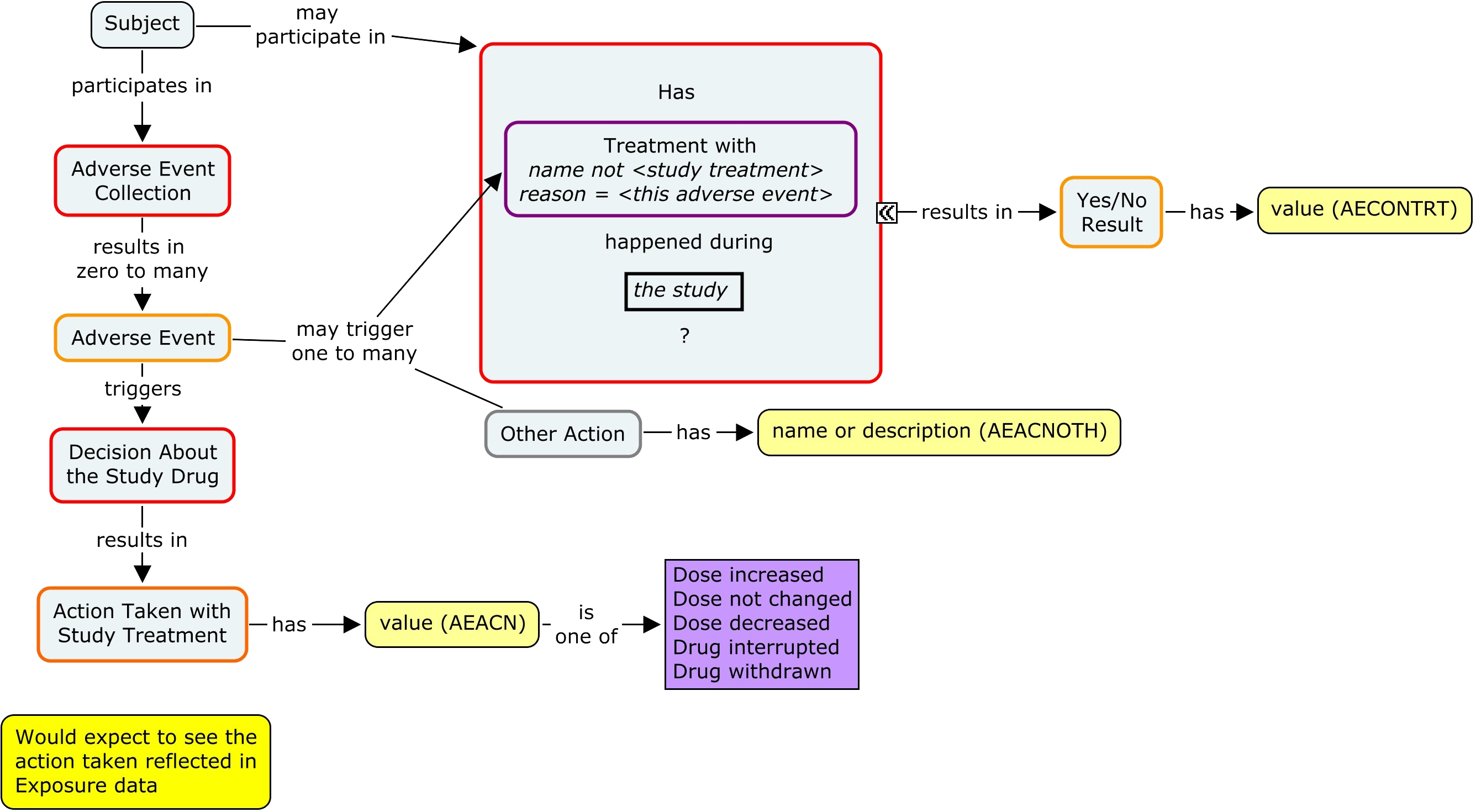A query about adverse events is, at heart, an observation.
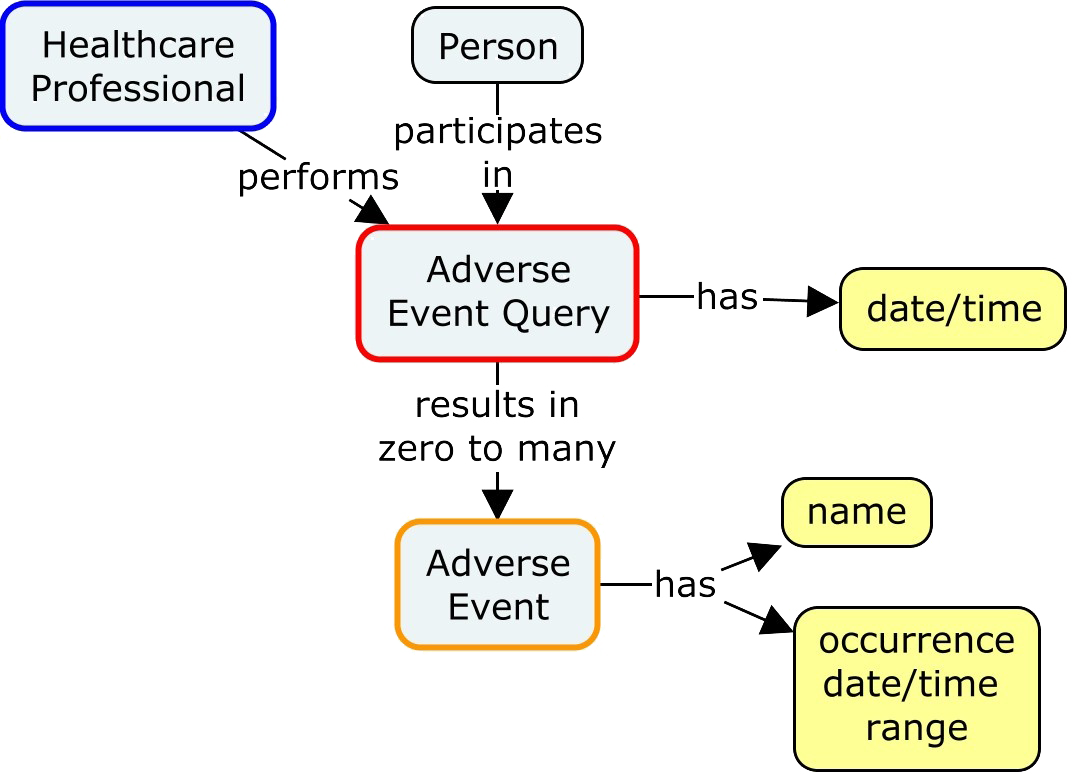
Data on the adverse event may also include location and pattern. This concept map includes those details, as well as Controlled Terminology that would be used in SDTM.
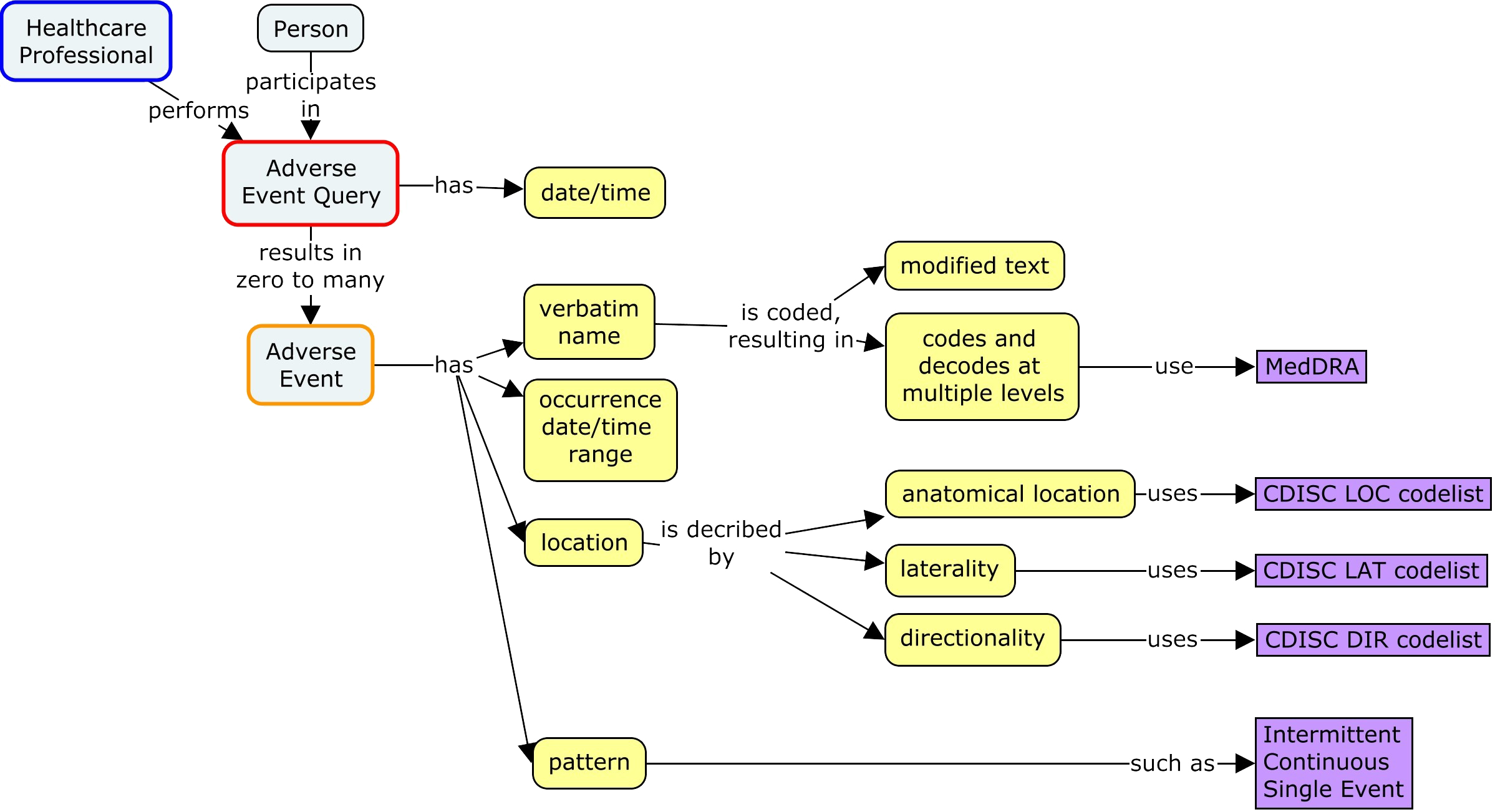
In the SOAP (Subjective Objective Assessment Plan) framework of medical records, an adverse event is the result of an Assessment, which may be based on subjective information provided by the subject and the objective results from tests. In SDTM, the results of those subjective and objective results would be in separate records, although they might be linked to the adverse event record. For simplicity and clarity, these Subjective and Objective observations are not included in the concept maps below.
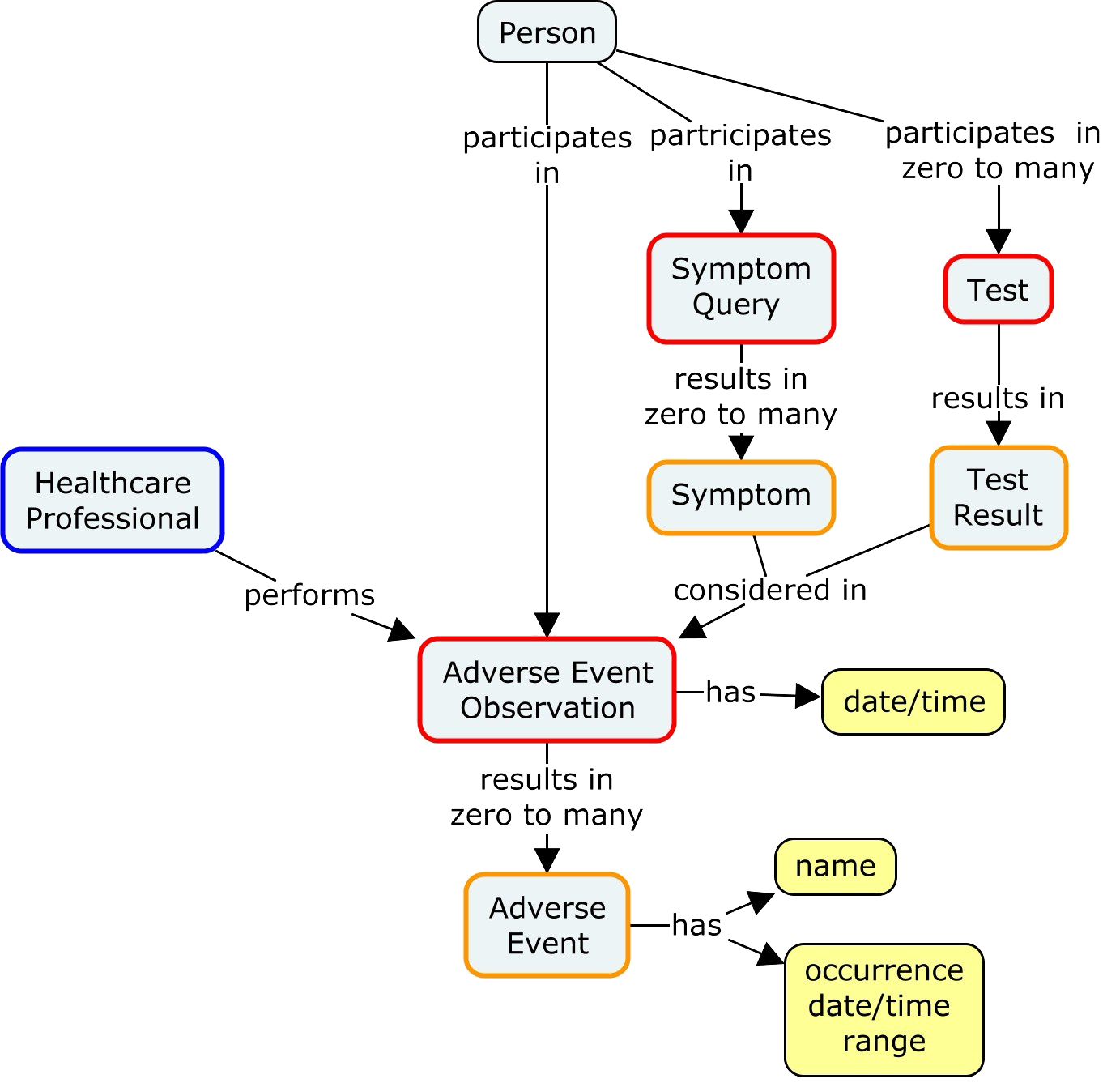
In the SOAP framework of medical records, there may be a plan for addressing the adverse event. That plan may include a variety of activities.
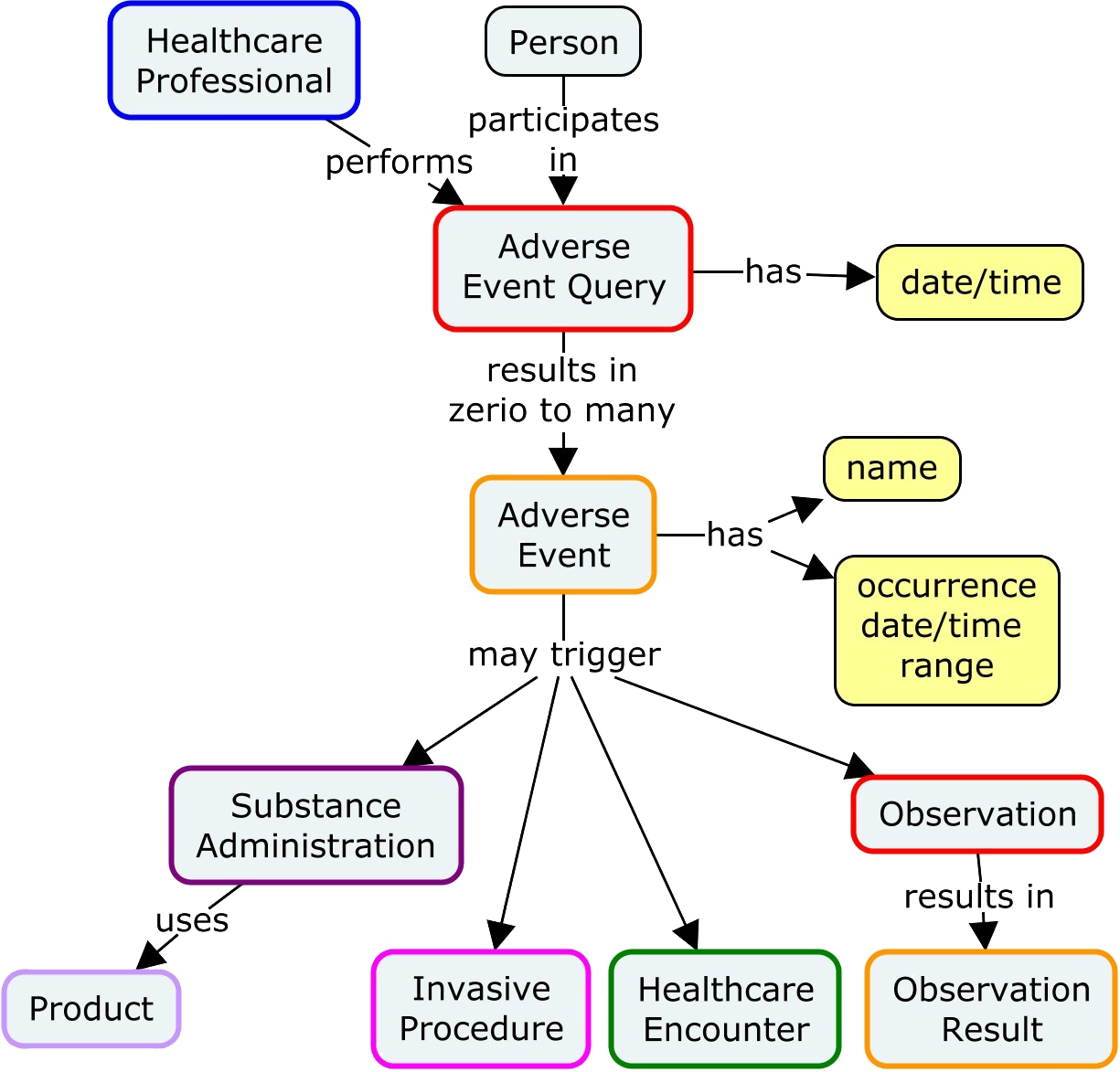
Adverse event reporting in the context of a clinical trial includes a large number of activities, all of which can be modeled as observations related to the adverse event.
- Assessment of the severity or toxicity grade of the event
- Assessment of the outcome of the event
- Assessment of the adverse event against several seriousness criteria
- Assessment of the study treatment as a cause of the adverse event
- Decisions about modifying or discontinuing the study treatment
- Other treatment decisions resulting from the adverse event
Assessments of severity, toxicity grade and outcome are relatively straightforward.
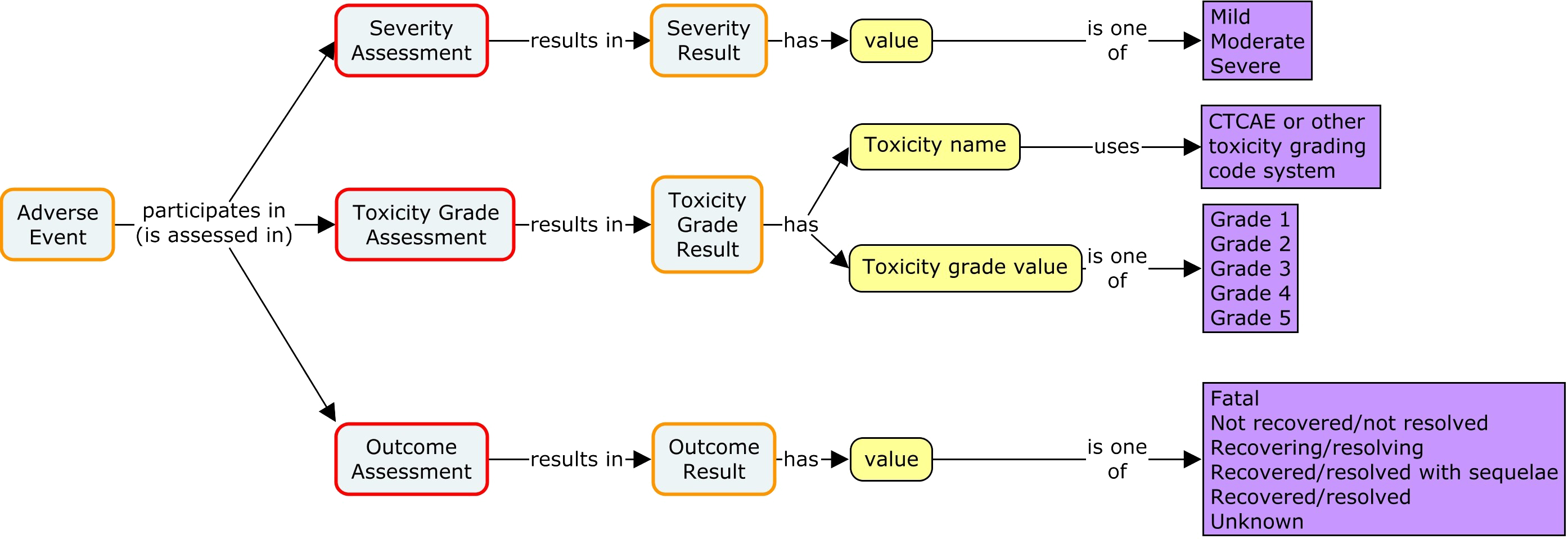
Assessment of seriousness involves assessments of separate criteria, which together determine whether the event is serious.
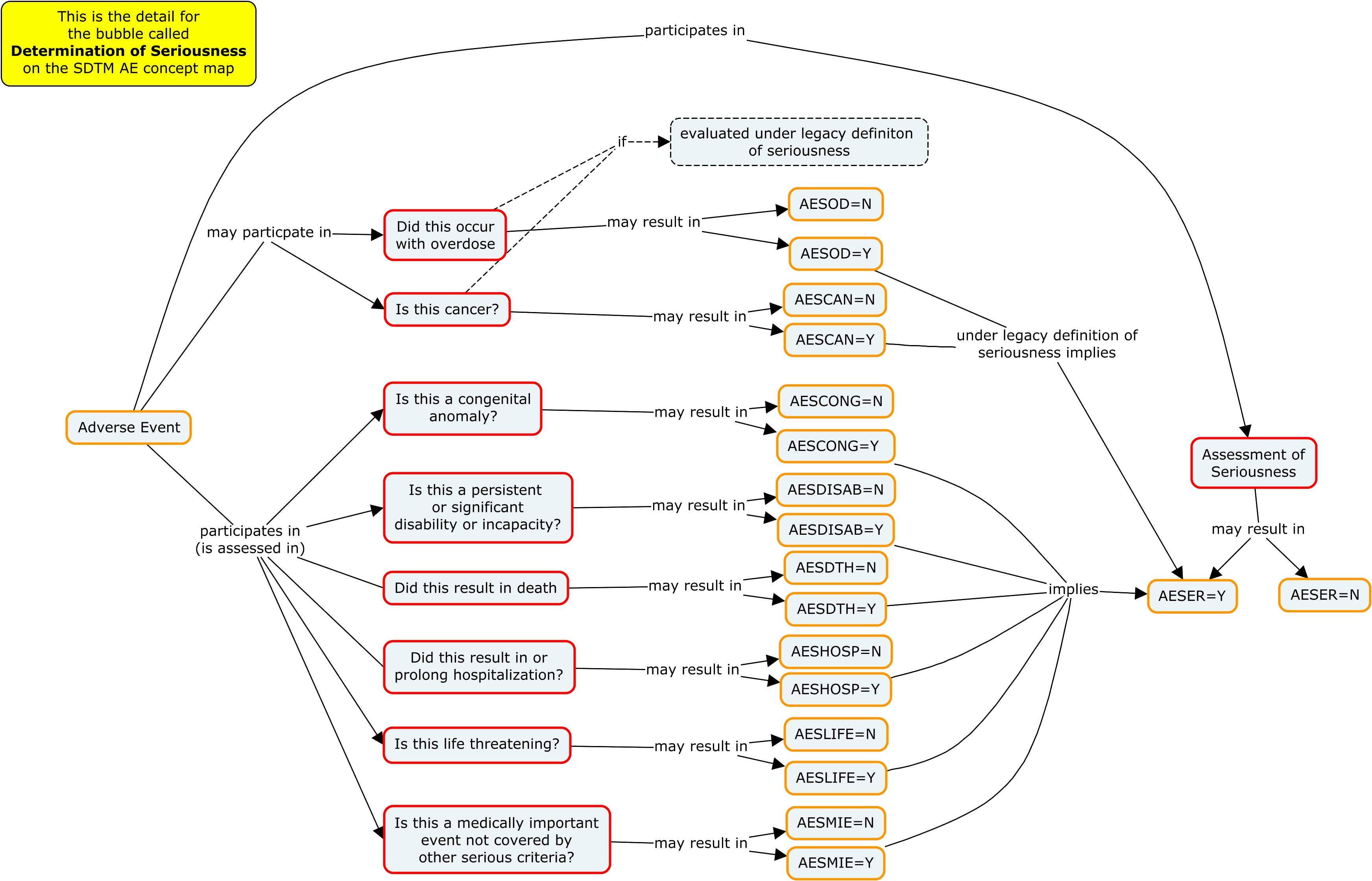
Causal assessments of an event involve assessing various activities and observation results as possible causes, then summarizing across all possible causes to draw a conclusion about causality. SDTM includes standard variables for only two possible causes, AEREL for study treatment, and AERELNST for non-study treatments. The following concept map is based on BRIDG modeling of this complex situation. The blue bubbles represent the relationships between the adverse event and various possible causes; the "probability codes" are assessments of the likelihood that the possible cause was in fact the cause.
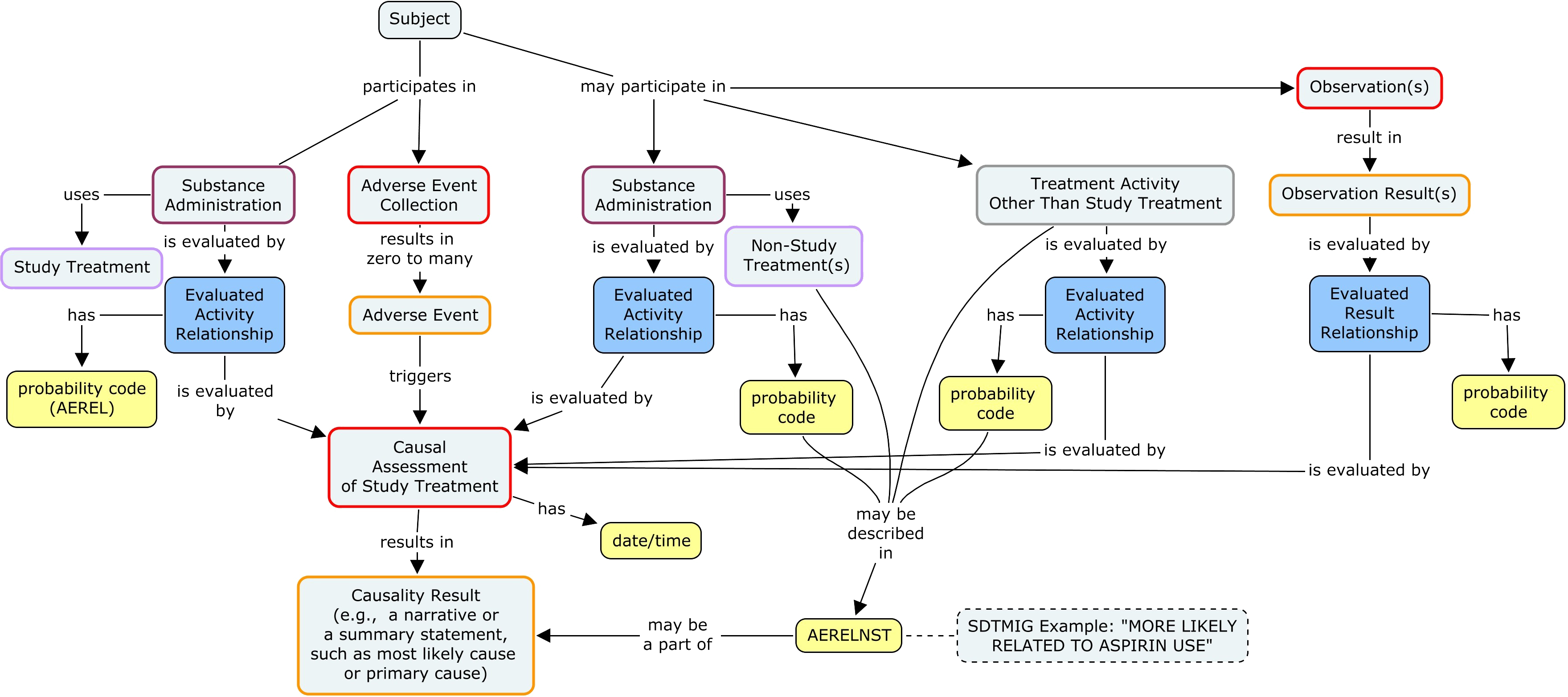
Of the many actions that could be taken to address an adverse event, SDTM includes standard variables for actions taken with study treatment, AEACN; an indicator of whether action was taken with concomitant treatments, AECONTRT; and a variable for the name or description of other actions, AEACNOTH.
